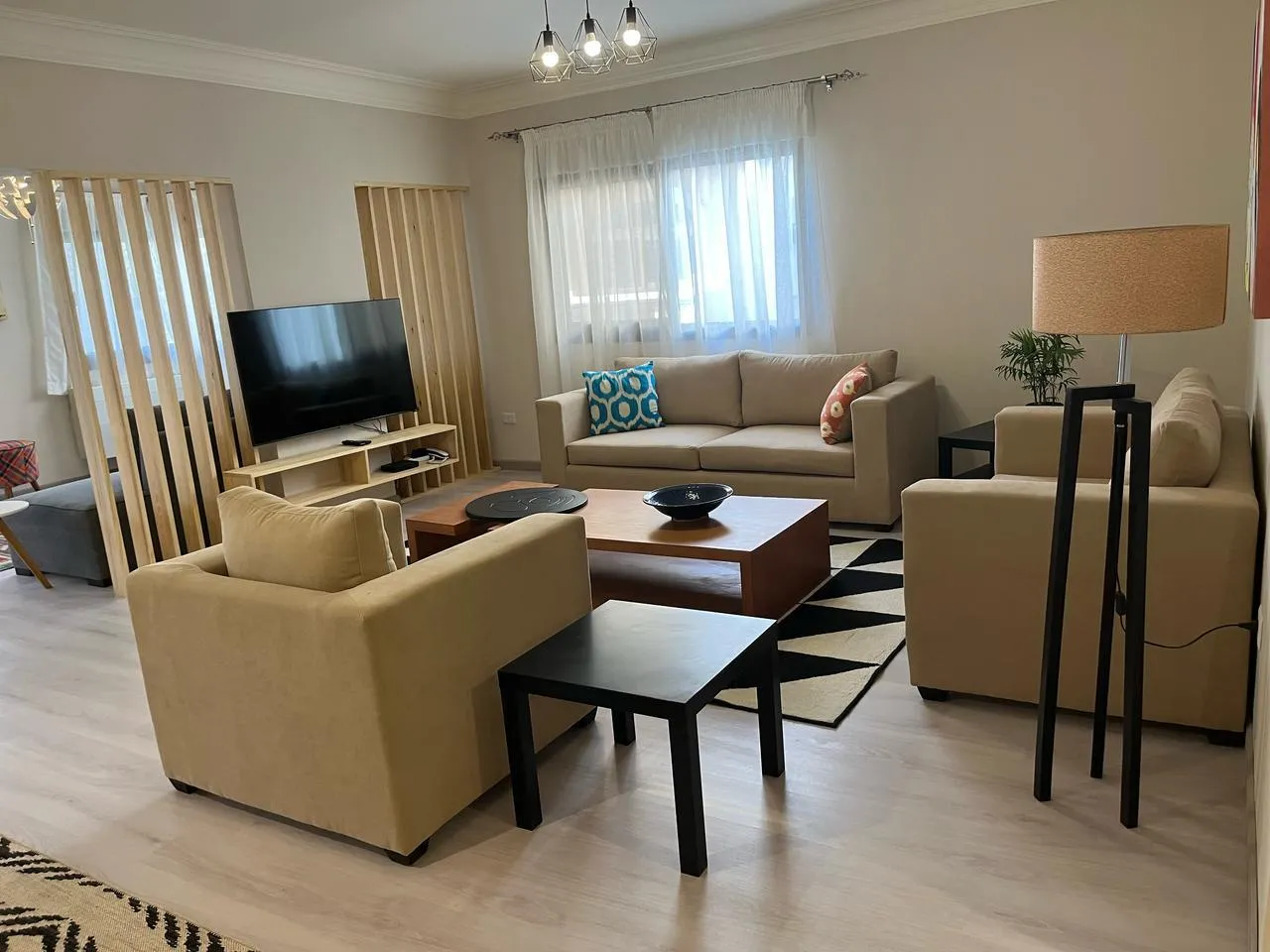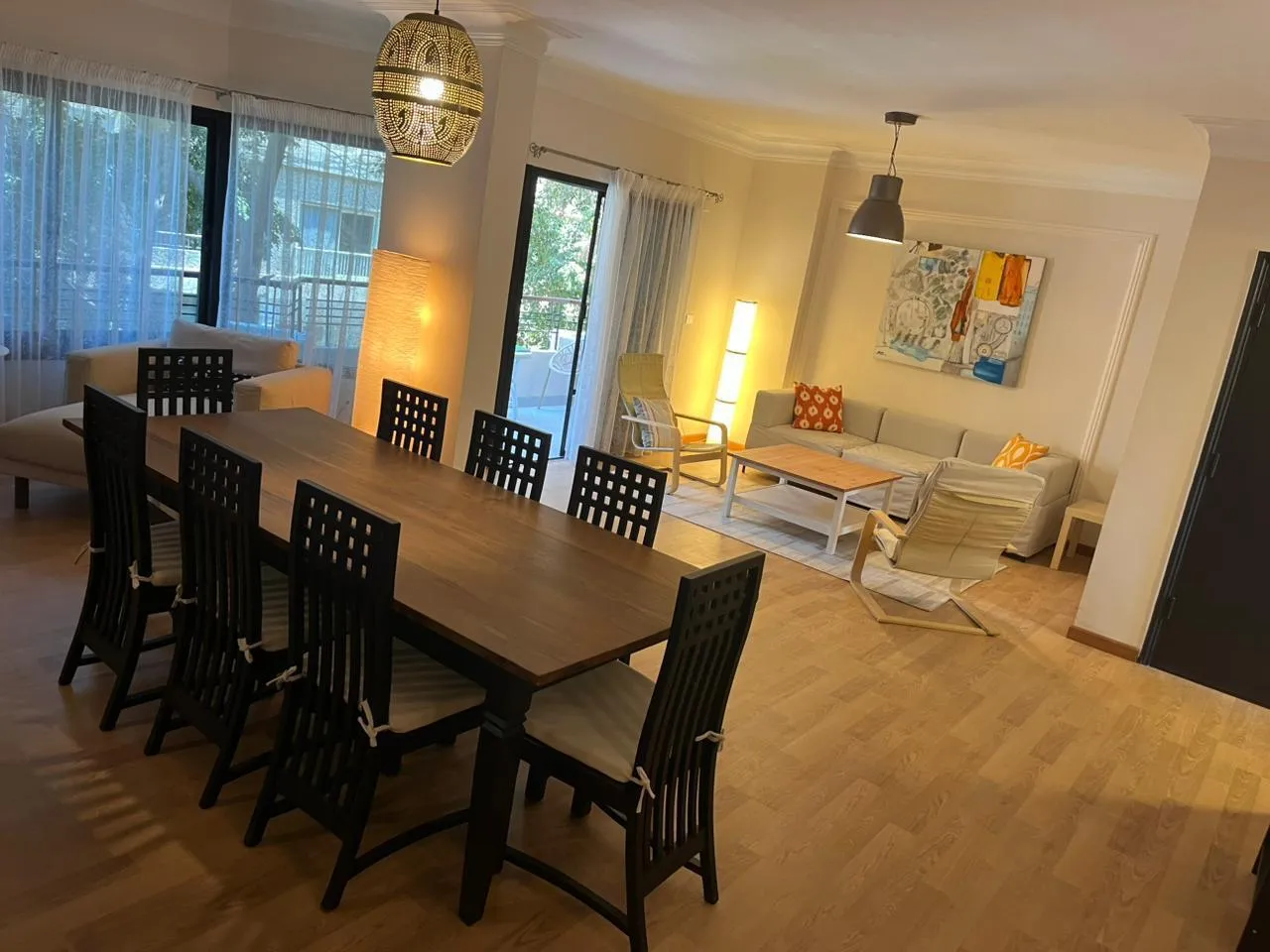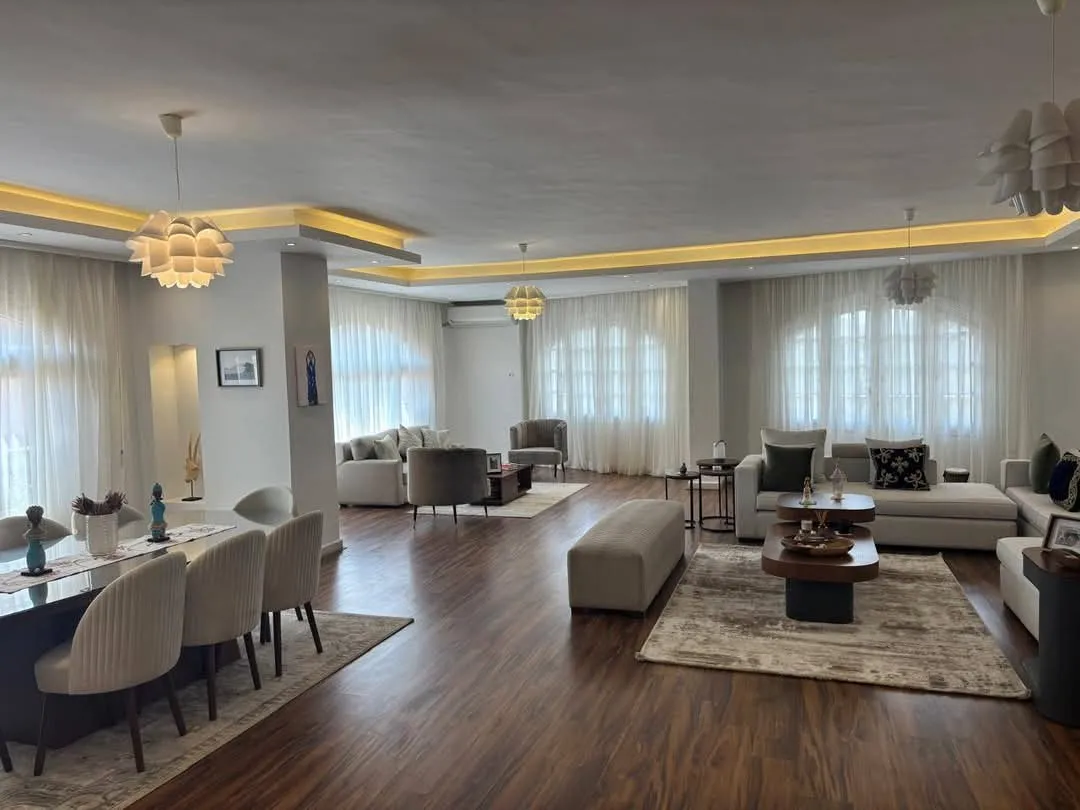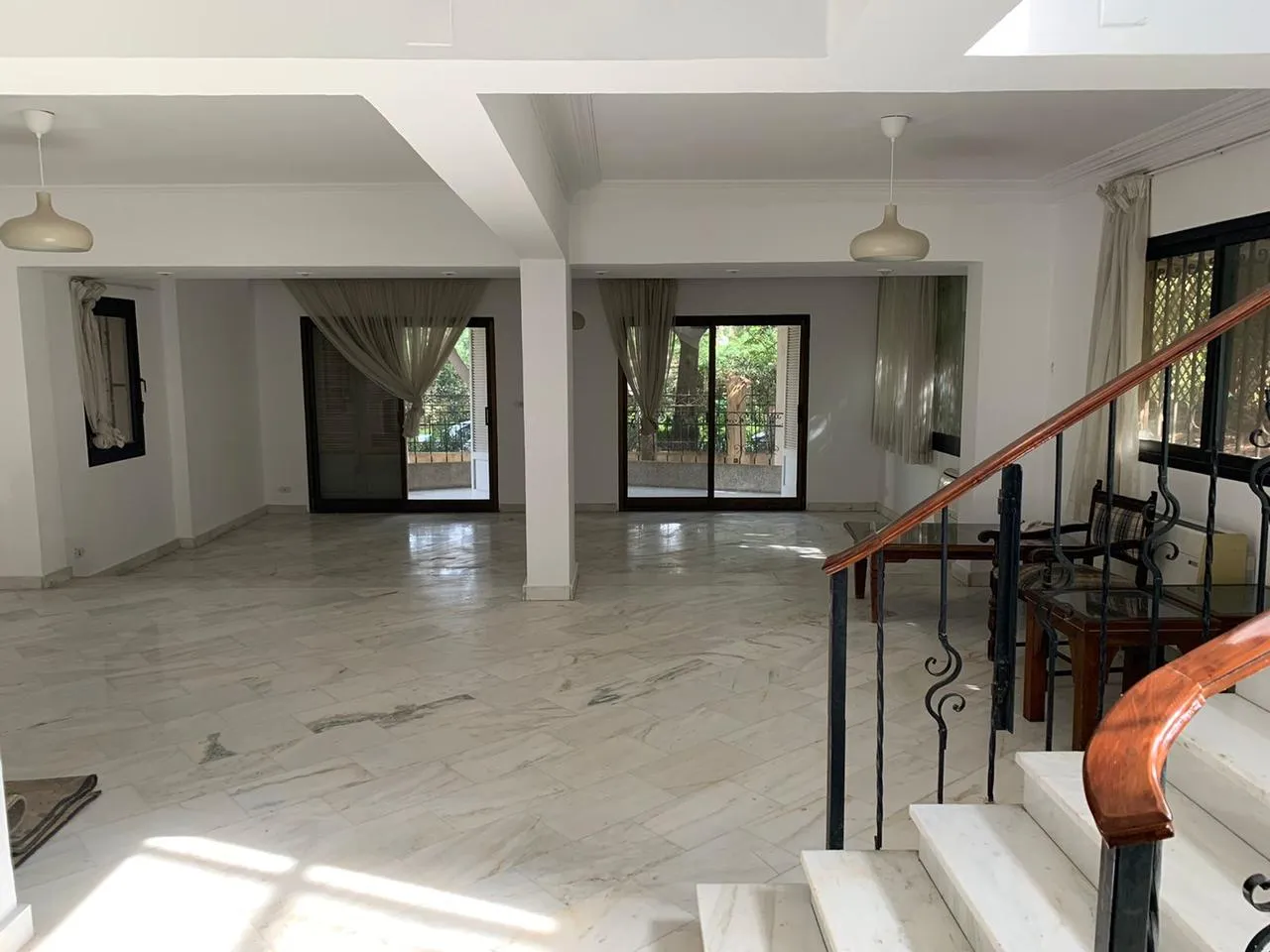Apartment Size in Egypt Over the Last 50 Years
الكاتب
Ali Ashour
الوقت
18 دقيقة
اللغة
الانجليزية
كتبت بتاريخ:
3/23/2024
تم التحديث:
4/15/2024
Tracing the Evolution of Apartment Size in Egypt Over the Last 50 Years
Over the past five decades, the transformation of apartment size in Egypt reveals a dynamic narrative intertwined with socio-economic, cultural, and technological shifts. Initially known for spacious living environments, the average size of apartments has seen a notable reduction, a trend that parallels global movements in urbanization and housing market evolution. This shift is further underscored by Egypt's position on the global stage, with its condominiums and apartments market poised for significant growth, making it a focal point for those interested in the evolving landscape of housing.

This article delves into the journey of apartment size change in Egypt from the 1970s to the present, exploring factors that have influenced this transition such as economic shifts, urbanization, and changing lifestyle preferences. Additionally, it assesses the broader implications of these trends on society and the economy, highlighting the challenges and opportunities within the realm of property, design, and personal space. Through this exploration, the article sheds light on how the fluctuating dimensions of living spaces mirror broader societal transformations.
The 1970s: Spacious Living and Family Dynamics
In the 1970s, Egypt witnessed a significant transformation in living arrangements and apartment size preferences, primarily driven by socio-cultural shifts and economic factors. This period marked a departure from the traditional extended family living setups towards a more nuclear family-oriented structure. Below are key points that highlight the evolution of apartment sizes during this era:
- Shift in Family Dynamics:
- The traditional collectivistic nature of Arabic culture, which favored extended families and a male-dominant hierarchy, began to evolve in the 1970s.
- This period saw a rise in nuclear families, leading to a decreased demand for extended family living arrangements. Consequently, there was an increased demand for smaller apartments, reflecting the changing family dynamics.
- Popularity of Studio and One-Bedroom Units:
- Accompanying the shift towards nuclear family units was the growing popularity of studio apartments and one-bedroom units.
- These types of apartments catered to the needs of smaller families and individuals seeking personal space, marking a departure from the larger living spaces prevalent in previous decades.
- Comparison of Apartment Sizes Over Decades:
- 1950s: Apartments were larger, averaging around 120 square meters, catering to the needs of extended families. These spacious apartments were, however, more expensive.
- 1970s and 1980s: Despite the economic implications, the preference shifted towards apartments with three or four bedrooms, a large living area, and multiple bathrooms, indicating a balance between the need for space and the emerging trend of nuclear families.
- This period also underscored a significant shift in demand for apartment sizes, aligning with the global trend of reducing living spaces in response to urbanization and economic considerations.
The 1970s in Egypt were pivotal in shaping the future of housing and apartment sizes, reflecting broader socio-economic trends and the evolving needs of families. The move towards smaller, more affordable living spaces mirrored global urbanization patterns, setting the stage for further transformations in the decades to follow.
The 1980s and 1990s: Economic Shifts and Urbanization
In the transition from the 1970s to the 1990s, Egypt witnessed substantial economic and urban developments that significantly influenced the housing sector, particularly in terms of apartment sizes and living conditions. This period marked a gradual shift from a socialist economy towards a more open market system, setting the stage for the evolution of the real estate sector.
- Economic and Regulatory Changes:
- Open Market Economy: The late 1970s began the transition towards an open market economy, relaxing restrictions on private enterprise. This shift encouraged investments in real estate and construction, albeit under significant government control.
- Building Codes and Regulations: The 1980s introduced regulations and building codes aimed at addressing overcrowding and improving housing conditions. This regulatory environment laid the groundwork for the modernization of buildings in the 1990s, including apartment complexes.
- Urbanization and Housing Trends:
- Increase in Population Density: Urban areas saw a rise in population density, leading to a scarcity of affordable housing options. This scarcity prompted a decrease in apartment sizes, with smaller units becoming more prevalent.
- High-Rise Buildings and Mixed-Use Communities: Developers responded to urbanization by constructing high-rise buildings near major transportation hubs and developing mixed-use communities, optimizing the use of space in densely populated areas.
- Shift Towards Smaller Apartments: By the 1990s, there was a noticeable shift towards smaller apartments, with an average size of around 90 square meters. These apartments were designed to cater to a wider demographic, emphasizing efficient use of space.
- Socio-Economic Factors and Residential Patterns:
- Income Inequality and Residential Segregation: The period saw growing income inequality, contributing to residential segregation in Greater Cairo. The affluent were more likely to settle in segregated enclaves, while the poorer strata found themselves pushed to the city's periphery.
- Dissimilarity Index and Location Quotient: These metrics demonstrate the distribution of residents by occupational status across the Greater Cairo Region. Interestingly, the results indicate that economic inequality did not necessarily lead to greater socio-economic segregation during this era.
The 1980s and 1990s were pivotal decades for Egypt's housing sector, characterized by significant economic shifts, urbanization, and changes in living conditions. The move towards smaller, more efficient apartments reflected broader trends in population density and the need for affordable housing. Additionally, the period highlighted the complex interplay between economic policies, urban development, and socio-economic factors in shaping the landscape of residential living in Egypt.
The 2000s: The Luxury Boom and Spatial Disparity
In the 2000s, Egypt's landscape of housing underwent a dramatic transformation, marked by rapid urbanization and an unprecedented boom in housing development. However, this period also saw the emergence of significant spatial disparities in the housing sector:
- Luxury Housing Developments:
- Location: Predominantly in new cities and gated communities.
- Target Demographic: High-income households.
- Features: Larger apartment sizes with high-end amenities.
- Challenges for Low-Income and Middle-Class Households:
- Access to Affordable Housing: Severely limited, especially in urban areas.
- Expansion of Informal Settlements: Continued growth due to housing shortages.
- Government Initiatives: Efforts like the Social Housing Program and the Future Housing Project aimed at low-cost housing but didn't bridge the gap in spatial disparities.
- Spatial Disparities and Living Conditions:
- Luxury vs. Low-Income Housing: Well-planned areas dominated by luxury projects, while low-income households faced relegation to informal settlements and underserved neighborhoods.
- Overcrowding: Remains a significant issue, exacerbating the challenges in many parts of Egypt.
- Population Growth: Significant increase over the decades, putting pressure on housing resources.
- Informal Settlements: Emergence around major cities, characterized by subpar living conditions due to inadequate infrastructure and basic services.
This period in Egypt's housing history underscores a complex narrative of growth and disparity. While luxury housing projects flourished, offering spacious and amenity-rich living spaces to the affluent, the low-income and middle-class households faced an increasingly challenging housing landscape. The government's initiatives, though well-intentioned, primarily focused on providing low-cost housing solutions, which, while necessary, did not fully address the broader issue of spatial disparities. The result was a deepening divide in living conditions, with luxury housing projects and informal settlements often existing in close proximity, highlighting the stark contrasts within the Egyptian housing sector.
2010 to Present: Efficiency and Modern Living
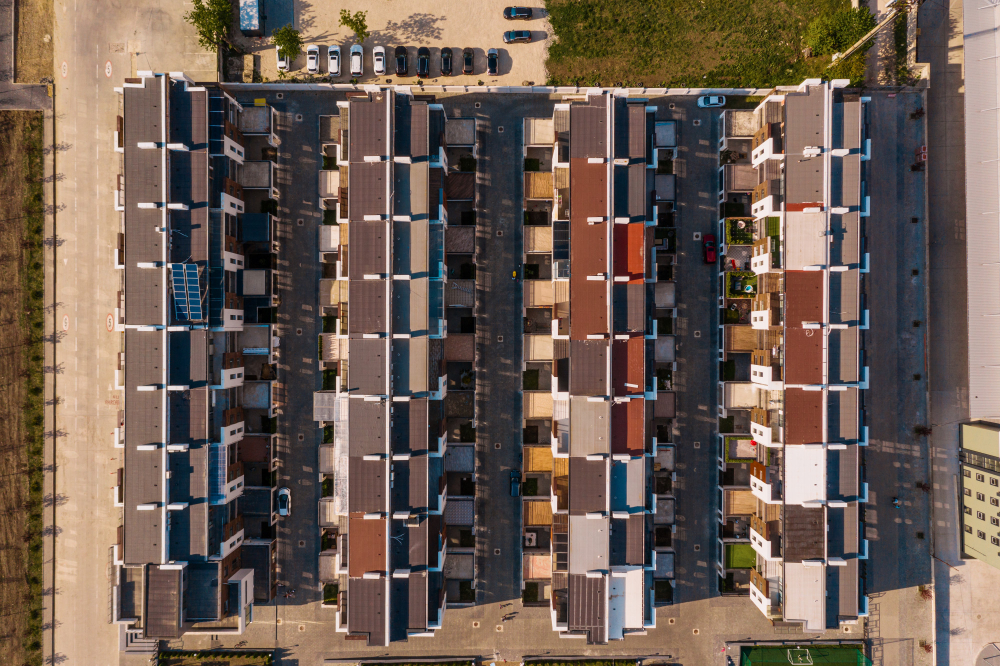
From 2010 to the present, Egypt's housing market has navigated through a series of economic and demographic shifts, significantly impacting apartment sizes and living conditions. This period is characterized by a notable evolution in residential preferences, underpinned by economic reforms, population growth, and the aftermath of the Covid-19 pandemic.
Economic and Demographic Influences:
- Population Growth and Housing Demand: Egypt's population increases by approximately 2.5 million annually, coupled with around one million marriages each year, fueling a substantial demand for housing. This demographic pressure has necessitated a shift towards more efficient, albeit smaller, living spaces to accommodate the growing need.
- Economic Reforms and Currency Fluctuations:
- The average exchange rate soared to EGP 30.81 per USD 1 in March 2023, a stark depreciation from EGP 8.88 per USD 1 in 2016, following the decision to float the Egyptian pound. This economic measure, alongside others such as the reduction of fuel subsidies, has significantly influenced purchasing power and, by extension, the housing market dynamics.
- The real estate price index surged by 28.4% in February 2023 from the previous year, with house prices increasing by 25.4% during 2022. These figures reflect a recovering, yet volatile, housing market, with periods of strong growth interspersed with declines due to political unrest and the global financial crisis.
Market Trends and Residential Preferences:
- Shift Towards Smaller Apartments: The trend towards smaller apartments has become more pronounced, with modern units often featuring one or two bedrooms and a compact living area. Despite their reduced size, these apartments are designed to maximize functionality and efficiency, ensuring residents have access to necessary amenities for comfortable living.
- Spatial and Price Disparities:
- New Cairo: Known for having the smallest minimum average apartment size among major Egyptian cities, it has witnessed a strong 24.1% year-on-year increase in apartment prices to EGP 13,900 per sq. m. in March 2023.
- El Sheikh Zayed City and El Zamalek: These upscale areas have seen significant price increases, with apartment prices in El Sheikh Zayed City soaring by 27.8% to EGP 13,100 per sq. m., and El Zamalek reaching EGP 22,400 per sq. m., up by 9% from the previous year.
- Affordability and Overcrowding Concerns: Despite the push towards efficiency, concerns persist about the impact of smaller units on quality of life, particularly in terms of overcrowding. However, with limited resources and a burgeoning population, compact living spaces are likely to remain a staple in Egypt's housing landscape.
This period marks a critical juncture in Egypt's housing sector, characterized by a delicate balance between accommodating a growing population and navigating economic challenges. The shift towards smaller, more efficient apartments reflects broader trends towards modern living, even as the market grapples with issues of affordability and spatial disparity.
Impacts on Society and Economy
The evolution of apartment sizes in Egypt over the past 50 years has had profound impacts on both society and the economy, reflecting broader global trends while also showcasing unique local dynamics. These impacts can be categorized into societal and economic effects:
Societal Impacts:
- Changing Family Dynamics: The shift towards smaller apartments has mirrored and facilitated changes in family structure, moving from extended to nuclear families. This transition is tied to broader socio-economic shifts, including rising education levels and transitions to employment among young men, which have further contributed to delays in marriage due to the challenges of acquiring acceptable housing.
- Urbanization and Lifestyle Changes: As the population concentrated in urban areas, particularly around the Nile valley where about 90% of Egyptians live on only 4% of the land, the demand for housing intensified. This urbanization, coupled with a young population and a high birth rate in the 1970s, necessitated a more efficient use of land. The development of high-rise buildings near major transportation hubs and mixed-use communities reflects an adaptation to these demographic pressures, enabling more Egyptians to access housing and commercial spaces within walking distance, thus promoting a more modern, urban lifestyle.
- Housing and Marriage Negotiations: The size and affordability of apartments have played a prominent role in marriage negotiations, influencing social norms and expectations. The initial acquisition of housing, constituting a significant portion of total marriage costs, has placed considerable financial pressure on grooms and their families, impacting social practices and contributing to marriage delays.
Economic Impacts:

- Real Estate Market Dynamics: The decreasing average size of apartments and the corresponding rise in land prices have significantly influenced the real estate market. This dynamic has led to the construction of smaller, more affordable units to meet the growing demand, particularly among young families and professionals. However, it has also resulted in increased construction costs and a market disparity between those who can afford adequate housing and those who cannot.
- Government Initiatives and Investment: In response to the housing challenge, the government has launched several initiatives aimed at providing affordable housing options and stimulating the real estate sector. These efforts include the construction of new cities, such as the New Administrative Capital (NAC), and investing more than USD 44 billion in housing projects over a decade. Such initiatives have not only aimed to address the quantitative and qualitative challenges in the housing sector but have also attracted significant investments, both domestic and international, into apartment construction.
- Impact on the Rental Market: The introduction of the 'new rent' law in 1996, allowing for rental contracts of definite duration and enabling landlords to increase rent on contract renewal, has altered the rental landscape. This, combined with rent control policies that limited the return on investment for housing construction, has influenced the supply and affordability of rental housing, with implications for economic development and urban planning.
These societal and economic impacts underscore the complex interplay between housing policies, market dynamics, and demographic trends in shaping the evolution of apartment sizes in Egypt. The efforts to balance the need for affordable housing with the challenges of urbanization, population growth, and economic constraints reflect broader themes in global urban development, while also highlighting the unique aspects of Egypt's housing sector.
Conclusion
The exploration of apartment size evolution in Egypt over the last fifty years presents an intricate tapestry of socio-economic and cultural shifts, reflecting changes not just on a local scale but mirroring global urbanization challenges as well. From the spacious family abodes of the 1970s to the modern, compact units of today, the transformation encapsulates a broader narrative of adapting to changing economic realities, evolving family structures, and the relentless push towards urbanization. These changes not only highlight the dynamism of Egypt's housing market but also underscore the complex relationship between societal trends and architectural practices, illustrating how shifts in the domestic sphere often prefigure larger societal transformations.
As we look to the future, the ongoing evolution in apartment sizes and living conditions in Egypt prompts a reflection on the broader implications for society and the economy. The push towards efficiency and modern living, exacerbated by demographic pressures and economic considerations, challenges us to reconsider notions of space, community, and sustainability. Moving forward, the insights gleaned from Egypt's experience offer valuable lessons on balancing the delicate interplay between adapting to a modern urban lifestyle and preserving the social fabric that characterizes vibrant communities. As Egypt continues to navigate these challenges, its journey offers a compelling narrative on the resilience and adaptability of societies in the face of changing times.

